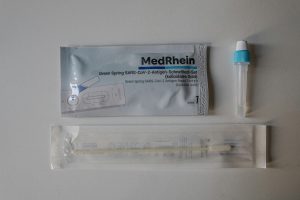Smart Ceilings: IoT Sensors Tracking Air Quality & Health Metrics
The advancement of technology has revolutionized many industries, and the world of interior design and architecture is no exception. While traditional ceilings mainly served an aesthetic purpose, the emergence of smart ceilings has transformed them into functional and intelligent assets. These ceilings are integrated with Internet of Things (IoT) sensors, allowing them to track and monitor various aspects of indoor environments. One of the most critical metrics being monitored by smart ceilings is air quality and its impact on human health. In this article, we will explore the concept of smart ceilings and how IoT sensors are playing a crucial role in tracking air quality and health metrics.
What are Smart Ceilings?
Smart ceilings, also known as intelligent or responsive ceilings, are a recent innovation in the home automation industry. These ceilings are equipped with sensors, LED lights, and other technologies that can communicate and interact with other devices in a smart home network. They are designed to provide a seamless and efficient control over various aspects of indoor environments, including lighting, temperature, ventilation, and air quality.
How Do Smart Ceilings Work?
Smart ceilings typically consist of an array of sensors embedded within the ceiling structure. These sensors collect data on various environmental parameters, and the information is then transmitted to a central control system. Based on the data received, the control system can make automatic adjustments to maintain the desired conditions in the space.
For instance, if the sensors detect low air quality levels, the smart ceiling can activate the ventilation system to improve air circulation. Similarly, if the temperature rises above the set threshold, the smart ceiling can automatically turn on the air conditioning. These responsive actions not only ensure a comfortable indoor environment but also help conserve energy and reduce utility costs.
The Role of IoT Sensors in Tracking Air Quality and Health Metrics
One of the most significant advantages of smart ceilings is their ability to track and monitor air quality and health metrics. The inclusion of IoT sensors in these ceilings enables them to collect data on various pollutants present in the air, such as carbon dioxide, particulate matter, volatile organic compounds (VOCs), and radon. The data collected by these sensors is then processed and analyzed to provide real-time information on the quality of air and its potential impact on human health.
The Importance of Monitoring Air Quality
Air quality is a crucial factor that significantly impacts our health and well-being. Poor air quality can lead to various health issues, including asthma, allergies, respiratory diseases, and even heart disease. According to the World Health Organization (WHO), around 7 million people die prematurely every year due to exposure to indoor and outdoor air pollution. Therefore, it is essential to monitor and maintain a healthy air quality level, especially in indoor environments where people spend most of their time.
Smart ceilings equipped with IoT sensors can continuously monitor the levels of pollutants in the air, providing valuable insight into the current air quality conditions. This real-time information allows for timely interventions to improve air quality, ensuring that the indoor environment remains healthy and safe for all occupants.
The Health Metrics Tracked by Smart Ceilings
In addition to monitoring air quality, smart ceilings can also track various health metrics that can affect our well-being. These metrics include temperature, humidity, and light levels. The ambient temperature and humidity levels can significantly impact our comfort and immune system, making it crucial to maintain them at optimal levels. Smart ceilings with temperature and humidity sensors can adjust these conditions automatically, ensuring that the indoor environment remains comfortable and healthy.
Lighting is another crucial factor that can influence our health. The intensity and timing of light exposure can affect our circadian rhythms, sleep patterns, and overall well-being. With the help of light sensors, smart ceilings can regulate natural light levels and synchronize them with artificial lighting, promoting a healthy sleep-wake cycle and providing an optimal lighting environment for different tasks.
Conclusion
Smart ceilings are transforming the way we design and interact with our indoor spaces. With the integration of IoT sensors, these ceilings can monitor and maintain various environmental parameters, including air quality and health metrics. By providing real-time information and taking responsive actions, smart ceilings ensure a comfortable, healthy, and energy-efficient indoor environment. As technology continues to advance, we can expect to see more innovative and intelligent features integrated into our homes, including smart ceilings with enhanced capabilities.











